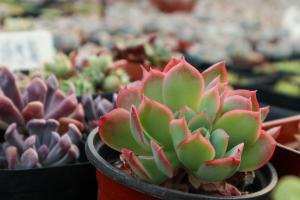1、 Curing method
1. Temperature: it has high requirements for curing temperature and is neither heat-resistant nor frost resistant. The temperature of breeding in summer should be kept between 15 degrees and 25 degrees. If the temperature exceeds 25 degrees, the branches and leaves will be scorched and dehydrated. The temperature in winter cannot be lower than 5 degrees. If the temperature is lower than 5 degrees, the plants will be frostbitten, and this frostbite is irreversible and will have a great impact on the growth of the plants
2. Watering: during the growth period, the amount of watering should be appropriately increased, because it consumes a lot of nutrients at this time. Generally, watering should be done every other day to keep the soil moist. During the non growth period, water should be controlled. Generally, watering should be done once a week to avoid ponding in the soil
3. Fertilization: in addition to the base fertilizer placed in the soil before planting, it also needs to be fertilized once a month. Although it has the characteristics of barren resistance, the nutrient consumption in the growth period is very fast, and it is not enough to rely on the nutrient of the soil alone. Special fertilizer for meat and self-made compost can be used for fertilization. It should be noted that the compost must be retched and cooked, otherwise the heat generated by the fertilizer will have an adverse impact on the growth of the plant
4. Light: summer is its dormancy period. Just let it receive astigmatism. The time should be between four hours and six hours. During the growth period, you can appropriately increase the light, but you can't put it in direct sunlight. If the sun is sufficient, the plant can also change color and turn into red or orange, which is also the reason why flower farmers like it
2、 Breeding skills
1. Propagation: it usually propagates by cutting. The leaves of the rosette are cut off and placed in a dry and cool environment. After the incision is dry, it can be planted into the soil. Generally, it can grow buds in ten days
2. Pruning: generally, pruning is not necessary, but in order to maintain the plant type, it can be properly pruned and shaped during the growth period
3、 Problem diagnosis
1. Insect pest: its main pest is root mealybug, which will attach to the root of the plant to absorb nutrition. In this case, the basin soil can be disinfected at high temperature, and then carbofuran can be buried in the soil for prevention
2. Disease: its branches and leaves are thick and fleshy, with high water content. It is easy to infect bacteria and cause plant decay. It is necessary to spray Carbendazim and other drugs on the plant every month for prevention. It is best to use several drugs to avoid drug resistance
4、 Other issues
1. Edible: not edible
2. Toxicity: non toxic

 jackfruit
jackfruit snake plant
snake plant hibiscus
hibiscus hydrangea
hydrangea lavender
lavender Green roses climb al...
Green roses climb al... If you don't pay att...
If you don't pay att... Management of four g...
Management of four g...


































